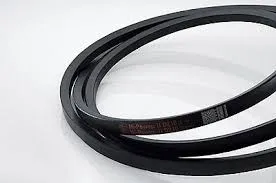- Arabic
- French
- Russian
- Spanish
- Portuguese
- Turkish
- Armenian
- English
- Albanian
- Amharic
- Azerbaijani
- Basque
- Belarusian
- Bengali
- Bosnian
- Bulgarian
- Catalan
- Cebuano
- Corsican
- Croatian
- Czech
- Danish
- Dutch
- Afrikaans
- Esperanto
- Estonian
- Finnish
- Frisian
- Galician
- Georgian
- German
- Greek
- Gujarati
- Haitian Creole
- hausa
- hawaiian
- Hebrew
- Hindi
- Miao
- Hungarian
- Icelandic
- igbo
- Indonesian
- irish
- Italian
- Japanese
- Javanese
- Kannada
- kazakh
- Khmer
- Rwandese
- Korean
- Kurdish
- Kyrgyz
- Lao
- Latin
- Latvian
- Lithuanian
- Luxembourgish
- Macedonian
- Malgashi
- Malay
- Malayalam
- Maltese
- Maori
- Marathi
- Mongolian
- Myanmar
- Nepali
- Norwegian
- Norwegian
- Occitan
- Pashto
- Persian
- Polish
- Punjabi
- Romanian
- Samoan
- Scottish Gaelic
- Serbian
- Sesotho
- Shona
- Sindhi
- Sinhala
- Slovak
- Slovenian
- Somali
- Sundanese
- Swahili
- Swedish
- Tagalog
- Tajik
- Tamil
- Tatar
- Telugu
- Thai
- Turkmen
- Ukrainian
- Urdu
- Uighur
- Uzbek
- Vietnamese
- Welsh
- Bantu
- Yiddish
- Yoruba
- Zulu
Říj . 02, 2024 09:11 Back to list
Understanding the Functionality and Applications of Synchronous Belt Drives
The Synchronous Belt Drive A Comprehensive Overview
The synchronous belt drive system is a critical component widely utilized in various mechanical systems. Its design, function, and benefits contribute significantly to the efficiency and reliability of many machines. This article provides an in-depth look at what a synchronous belt drive is, how it operates, and its applications across different industries.
What is a Synchronous Belt Drive?
A synchronous belt drive consists of a belt, usually made of rubber, reinforced with fibers for strength and stability. Unlike traditional belts, which can slip, a synchronous belt is designed to mesh with pulleys that have teeth. These teeth enable a positive engagement between the belt and the pulleys, ensuring that the motion is synchronized without any slippage. This is a crucial feature because it allows precise timing in the operation of machinery, making it ideal for applications where timing is critical.
How Does It Work?
The operation of a synchronous belt drive is straightforward. When the driving pulley turns, the teeth on the pulley engage with the teeth on the belt, pulling it in the direction of the rotation. As the belt moves, it also drives the follower pulleys connected to it, which can in turn move other components or machinery. This transfer of power occurs without any loss of movement or timing discrepancies, which is a significant advantage over non-synchronous systems.
The belts come in various designs, including the well-known timing belts, which are used to connect any type of rotating machinery, such as engines and automotive systems. The teeth on the belt and corresponding grooves on the pulleys are precisely designed to ensure smooth operation across various speeds and loads.
Advantages of Synchronous Belt Drives
1. Precision Timing One of the most significant benefits of a synchronous belt drive is its ability to maintain precise timings between connected components. This is particularly important in engines and robotic applications where even slight variations can lead to significant performance issues.
synchronous belt drive

2. Reduced Noise and Vibration Synchronous belts are generally quieter than chain drives or gear drives. The meshing of teeth results in lower vibration levels, which can reduce wear on components and increase the lifespan of the machinery.
3. Low Maintenance Unlike chain drives that require regular lubrication and tension adjustments, synchronous belt drives require minimal maintenance. This low-maintenance requirement is appealing for applications where uptime is critical.
4. Higher Efficiency The design of synchronous belt drives allows for higher efficiency in power transmission when compared to other belts. They can transmit more power with less energy loss due to their design and reduced slippage.
5. Variety of Materials Synchronous belts are available in a range of materials suited for specific applications, including high-temperature environments or ones exposed to corrosive substances. This versatility allows them to be used across various industries.
Applications of Synchronous Belt Drives
Synchronous belt drives are found in numerous industries and applications. In the automotive sector, they are used to drive camshafts, water pumps, and auxiliary systems, ensuring that the operation of engines remains synchronized to prevent any catastrophic failures. In manufacturing, these systems are employed in conveyor belts, robotics, and automation systems where precise control is essential for the seamless operation of processes.
In addition, synchronous belt drives are commonly found in printing machines, textile machinery, and even in office equipment like printers and copiers. The versatility and reliability of these systems make them a preferred choice in many mechanical applications.
Conclusion
The synchronous belt drive is an essential mechanism that enhances the efficiency and reliability of mechanical systems across diverse applications. Whether in automotive, manufacturing, or any other industry, understanding its function and advantages can lead to better machinery design and improved operational performance. With the constant advancement of materials and technology, the future prospects for synchronous belt drives remain bright, promising even greater innovations in precision engineering.
-
Korean Auto Parts Timing Belt 24312-37500 For Hyundai/Kia
NewsMar.07,2025
-
7PK2300 90916-T2024 RIBBED BELT POLY V BELT PK BELT
NewsMar.07,2025
-
Chinese Auto Belt Factory 310-2M-22 For BMW/Mercedes-Benz
NewsMar.07,2025
-
Chinese Auto Belt Factory 310-2M-22 For BMW/Mercedes-Benz
NewsMar.07,2025
-
90916-02660 PK Belt 6PK1680 For Toyota
NewsMar.07,2025
-
drive belt serpentine belt
NewsMar.07,2025

